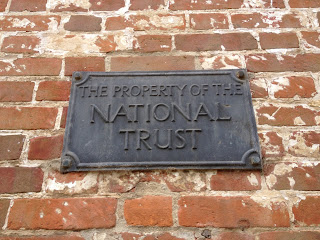How do you protect an iconic
landscape? Landscapes in general cannot be listed or scheduled in the same way as built structures, and they can change
rapidly as trees and plants grow and new features appear. Caring for landscapes is therefore a
challenge, yet they can be just as rich in meaning and significance as any
building or monument.
Flatford in Suffolk is perhaps one of the most iconic
landscapes in the world, despite (or perhaps because of) being such an
intimate, local place. Here, John Constable learned his craft as a painter, and
it is to this familiar corner of the Essex/Suffolk border that he
returned again and again, even as he made his name in the metropolitan art
world of the early nineteenth century.
Constable was born in East Bergholt in1776, the second son of a wealthy local
merchant, miller and farmer, whose fortune had enabled him to build a substantial
mansion two years earlier. Flatford Mill was at the centre of
Constable’s father’s business activities, and was therefore a place of business,
trade and labour.
The beauty of the landscape
in this part of Suffolk
inspired in Constable a detailed, picturesque mode of painting that is now
regarded as the very epitome of the English landscape painting tradition. His
works line the walls of the National Gallery, Tate, V&A and other great
galleries. So well known is Constable’s art, in fact, that this whole area of Suffolk takes his name –
we call it ‘Constable Country’.
Flatford has a place in our
national culture that far exceeds its local, domestic register. It has been visited
by organised groups of tourists since at least the 1890s, eager to seek out the place that inspired the artist. As Stephen Daniels has observed, Constable Country has
on many occasions served as a metaphorical index of the health of our
relationships – with the countryside or indeed with the nation at large.
Managing the different views
and vantage points at Flatford is an interesting challenge. It is possible to
take a tour with one of the excellent National Trust volunteer guides to
compare prints of Constable’s paintings with the view of the real thing. More
or less, the views remain similar. This is a direct result of the efforts that
have been taken to protect this corner of Suffolk,
now an Area of Outstanding Natural Beauty, by a wide range of organisations:
the National Trust, the RSPB, the Field Studies Council, the River Stour Trust,
the AONB and the County Council among them.
At the same time, many of
the views are now overgrown by comparison with the way Constable depicted them.
Work is at hand to produce tree management plans, and to contemplate the
potential removal of trees in order better to be faithful to the scenes that
Constable depicted.
Icons are prone to being
manipulated by others. Over the years, Constable’s most famous works have been re-used in a
variety of contexts, from biscuit tins to anti-nuclear statements. One
satirical treatment of Constable’s most famous work, the Hay-wain, was used to
highlight the proliferation of signage appearing in the countryside in the
1920s.
I was pleased to see the
rather stylish new National Trust signage now in place at Flatford on a recent
visit. But the growth of signs today, as with that of trees, is being carefully
managed to avoid unnecessary intrusion upon the landscape – even if this means, for now,
just one fingerpost to direct visitors to the loos.
 |
| Stylish new signage |








No comments:
Post a Comment